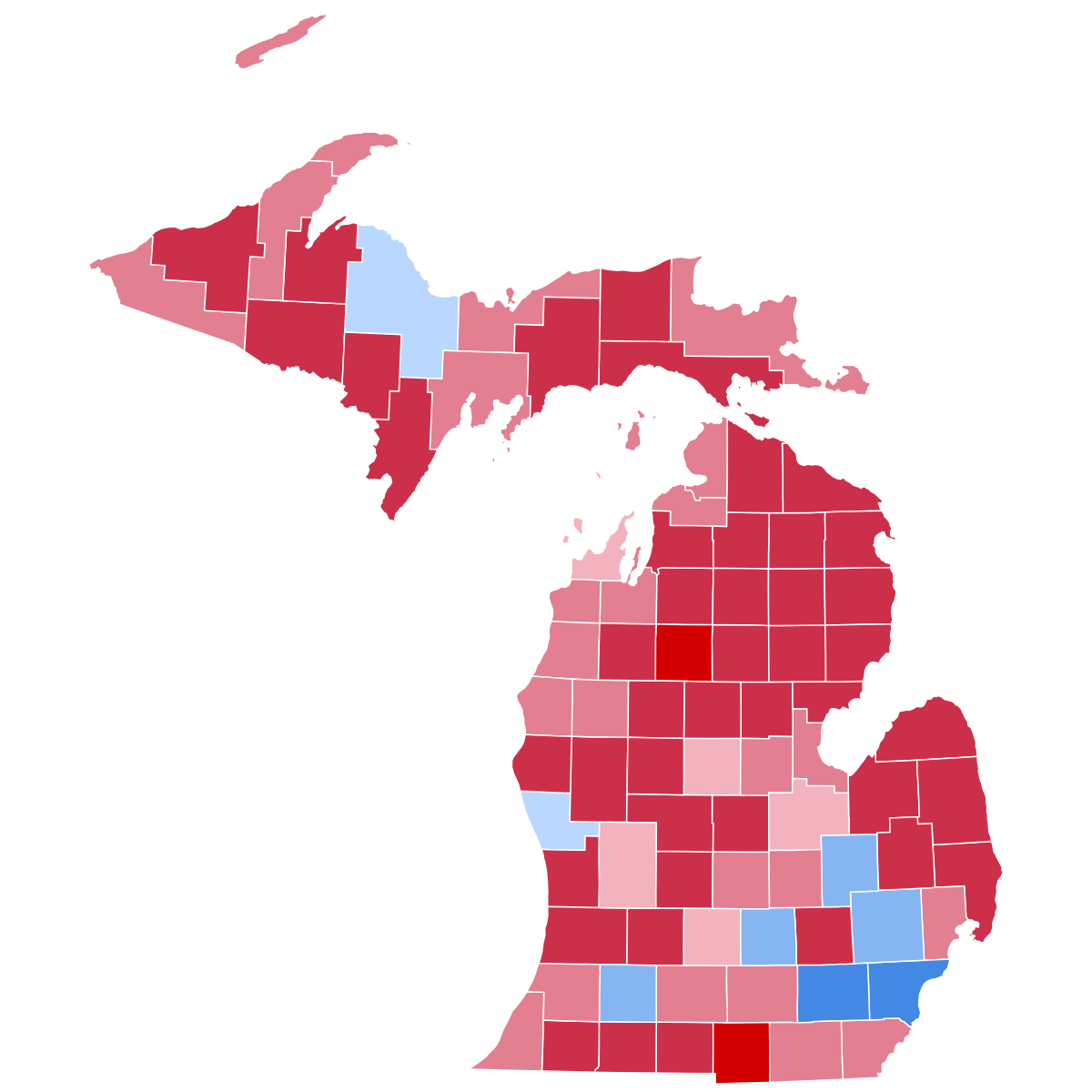In 1968, Richard Nixon and the Republican Party swept the election cycle. Nixon amassed an astonishing 301 electoral votes, helping conservatives gain five seats in both the Senate and House. Democrats would temporarily maintain control of the Congress, but the ‘red wave’ of 1968 left Americans everywhere with one message: the silent majority was asserting itself.
Classified as the group of forgotten, soft-spoken voices in Middle America, a sharp contrast to the anti-Vietnam protestors on the Left, this coalition ensured Nixon a victory. At the time, the party composed of union laborers, frustrated at the lack of patriotism from the Anti-Vietnam youth, felt marginalized. Their triumphant response, a 1972 election that saw Nixon win every state but two, meant they were here to stay.
Independent voters, a large contingent of this electoral group, are often the impetus of change in government. In the years since Nixon, getting independent votes, largely from suburban areas, wins elections. More recently, in 2018, the Democrats controlled the independent vote by 12 points, leading to a so-called ‘blue wave.’ Specifically, population areas categorized as ‘sparsely suburban’ and ‘densely suburban’ flipped a combined 27 seats in Congress to the Democrats. The overall election saw 36 total seats picked up, meaning the suburbs accounted for 90% of the gains.

Now, as election season is approaching, a rematch between Trump and Biden seems likely, a battle for the soul of our nation – a matchup nobody wants. Despite a productive first-term, Biden’s age coupled with unfortunate global events have made him wildly unpopular. The alternative, referred to by comedian Bill Maher as “the Orange Sphincter,” is currently facing dozens of criminal allegations across the country.
And yet, one demographic, the modern-day silent majority, will determine this election as it has for the last half-century: suburbia.
While suburban voters have largely become synonymous with moderates, they are essential to securing an electoral victory. Far too often liberals and conservatives, but primarily Democrats, overlook just how crucial this base of voters is. Take Hillary Clinton (D–NY), the Democratic nominee for President in 2016. After narrowly defeating democratic socialist Bernie Sanders (I – VT) in the primary, Clinton ignored the heart of American voters. She did not campaign extensively in Michigan, Pennsylvania, North Carolina, or Wisconsin, states she felt, given Obama’s margin of victory, were all but guaranteed victories. In Clinton’s book, featuring a reflection on her shocking defeat, she pontificates about the reasons behind the result. While recognizing the razor-thin margins in all four states, Clinton did express regret about having not invested more in Wisconsin, claiming her campaign was “caught by surprise.” The result: Trump outmatched her in all three states, giving him a pathway to victory.
The 2016 and 2020 elections revolved around the same Donald Trump – with starkly different results. In 2020, Biden managed to edge out Trump in three of the four aforementioned states. Plus, he picked up Georgia and Arizona, states viewed as purple. Suburban voters, particularly across the midwest, account for Biden’s victory.
In the Trump-Clinton contest, the electorate group dubbed the ‘silent majority’ made up exactly half the overall voting population. When the swing fell 53-48 in Trump’s favor, it propelled him to victories in swing states. Whether it was Clinton’s campaign strategy, Trump’s breath of fresh air, or a frustration with the liberal agenda, suburbia and victory proved compatible in 2016.
2020 told a different story: Biden appealed to moderates on the road to victory. Suburbs are loosely classified, but in the regions considered ‘suburban,’ Biden fared far better in 2020 than Clinton in 2016. He garnered 51.2% of voters, polling more than four points ahead of Clinton.
Election demographics have changed very little in other communities, with no major shift in voting trends across urban or rural areas; suburbs, however, have flipped constantly, with wide-sweeping ramifications.
2024 features semi-uncharted territory. Sure, the two constants are Biden and Trump, but the circumstances could not be any different. Politics are even more polarized, but more crucially, Biden is widely unpopular, with a current approval rating hovering around 41 percent. His age has raised questions of competence and sustainability. Progressives chide him for compromising too much in key areas. The migrant crisis, brought on by global tensions and factors outside of Biden’s control, as well as international chaos in Ukraine and the Middle East have not helped his case either. Moderates are simply nonplussed. Given the unpredictability of a Biden-Harris ticket, the silent majority will once again decide this presidential contest.
The silent majority will need swift results from Biden’s presidency. And as for the president’s popularity amongst suburban voters in important states – Michigan, Pennsylvania, Wisconsin, and Arizona – it is waning. Whereas two years ago, Biden maintained a 59% rating with suburban voters, merely 26% of the same voters approve of Biden’s current job.
I might not be a political consultant, but that does not mean I cannot prescribe the Democrats with the right medication. A victory in 2024 will rely on emphasizing a few key ideas – ones to which suburbia has responded in the past.
The first: reproductive rights. Suburban voters overwhelmingly support reproductive rights, a view contested by the overturning of past precedent established in 1973 under Roe v. Wade. Over 59% of voters back the Democrats, meaning, if played properly, reproductive rights could be a winning issue for the Left. If Biden can use those policies as a springboard to criticizing the Right’s more universally unpopular position, he should fare better in suburbia.
Secondly, Biden should emphasize his infrastructure policies that, while utilized in every state, faced scrutiny from many Republican incumbents. His most prominent piece of legislation, the Infrastructure Investment and Jobs Act, has already invested more than $100 billion into fixing crippling bridges and roads across America. Coupled with an extremely low unemployment rate, now sitting at around 4 percent, Biden’s policies on jobs and infrastructure are winners. The middle class, full of moderates in suburbs, have benefitted from his investments and job creation. Emphasizing these improvements in 2024 should provide further support for Biden in suburbia, increasing the prospects of a victory.
Third, Biden’s success might rest on his ability to chastise Trump throughout the election cycle while not alienating the average voter. Biden will have to select a persona: either the straight-laced contrast to Trump, or the person trying to provoke him. As he did in 2020, Biden knows his opponent: an unpopular, controversial figure that faces four indictments. It might just be a waiting game. Shining the spotlight on Trump, who is disliked by around 60% of suburban voters, could prove enough.

Immigration is another place to make up ground. During this tumultuous year, Governors Greg Abbott (R–TX) and Ron DeSantis (R–FL) have been busing migrants from their border states to ‘liberal havens’ like New York City, places that have guaranteed migrants protection from federal immigration laws. Conservatives have made this issue a priority, establishing a fairly universal belief in a border wall and increased security at the Southern Border.
During the First Republican Primary Debate, Florida Governor Ron DeSantis answered a question about international aid, proclaiming that, “[He is] not going to send troops to Ukraine but [he is] going to send them to our southern border.” That encapsulates Republican philosophy. There is one problem: suburban voters seem generally uninterested by these solutions to immigration. In fact, among suburban voters leaning right, only 13% purport that immigrants in their areas detract from the community, with a majority being neutral. All of that is to say, immigration policy is not priority one for the average suburbanite, and thus, Biden’s woes should not cost him the election.
Lastly, the newest topic sure to alienate voters across the country: Israel. Interestingly, despite the reports of pro-Palestine protests emerging from colleges and universities, the majority of Americans still support the existence and protection of Israel. Suburbanites are most relevant in this case, though, as the moderates in the United States are far less polarized on this issue. In fact, independent voters overwhelmingly support the Israelis, with 54% indicating their preference for Israel over Palestine.
Accordingly, Biden’s stance, one dubbed effusively pro-Israel, should resonate with the moderates in the suburbs. Regardless of personal opinion, Biden remaining firm in his convictions about Israel should benefit his campaign in 2024. Ensuring the support of the independents and moderates might bank on support for the Israelis during this conflict, and thus, Biden playing up his record should further his cause. For a Democrat, his beliefs are towards the center, and while Republicans might be pro-Israel as well, staying strong prevents the conservatives from attacking him. In this way, Israel adds another dimension to Biden’s prospects at re-election.
Biden has begun to embrace his role as Trump’s foil, creating a TruthSocial account under the name “Dark Brandon,” a reference to a nickname provided by Trump. However, for the suburban voters to become enthusiastic about Biden again in 2024, he will need to do more than counter the Former President online.
The main priority for Biden: let the voters’ priorities speak for themselves. If the swing voters he needs do not care as much about immigration as they do about gun laws or reproductive rights, focus on those other issues.
At the end of the day, as the 2024 election nears, it is not hyperbole to proclaim this next cycle as one of the nation’s most important yet. Democrats are desperate to prevent another term of Trump; Republicans are prepared to oust Biden and his inflation problems, a byproduct of the Russo-Ukrainian conflict and failed preventative measures. In the chaos, people forget these elections rest largely on one demographic: suburbia. And if it is any indication, Biden’s unpopularity is not nearly as profound as the disdain for Trump.
Good or bad, progressive or regressive, Biden’s victory is not as elusive as the media insists. He is not well-liked. But neither is Trump, and focusing on specific policy concerns that matter to the average suburbanite might just ensure more changes to build back better into 2024.
One demographic, the modern-day silent majority, will determine this election as it has for the last half-century: suburbia.


